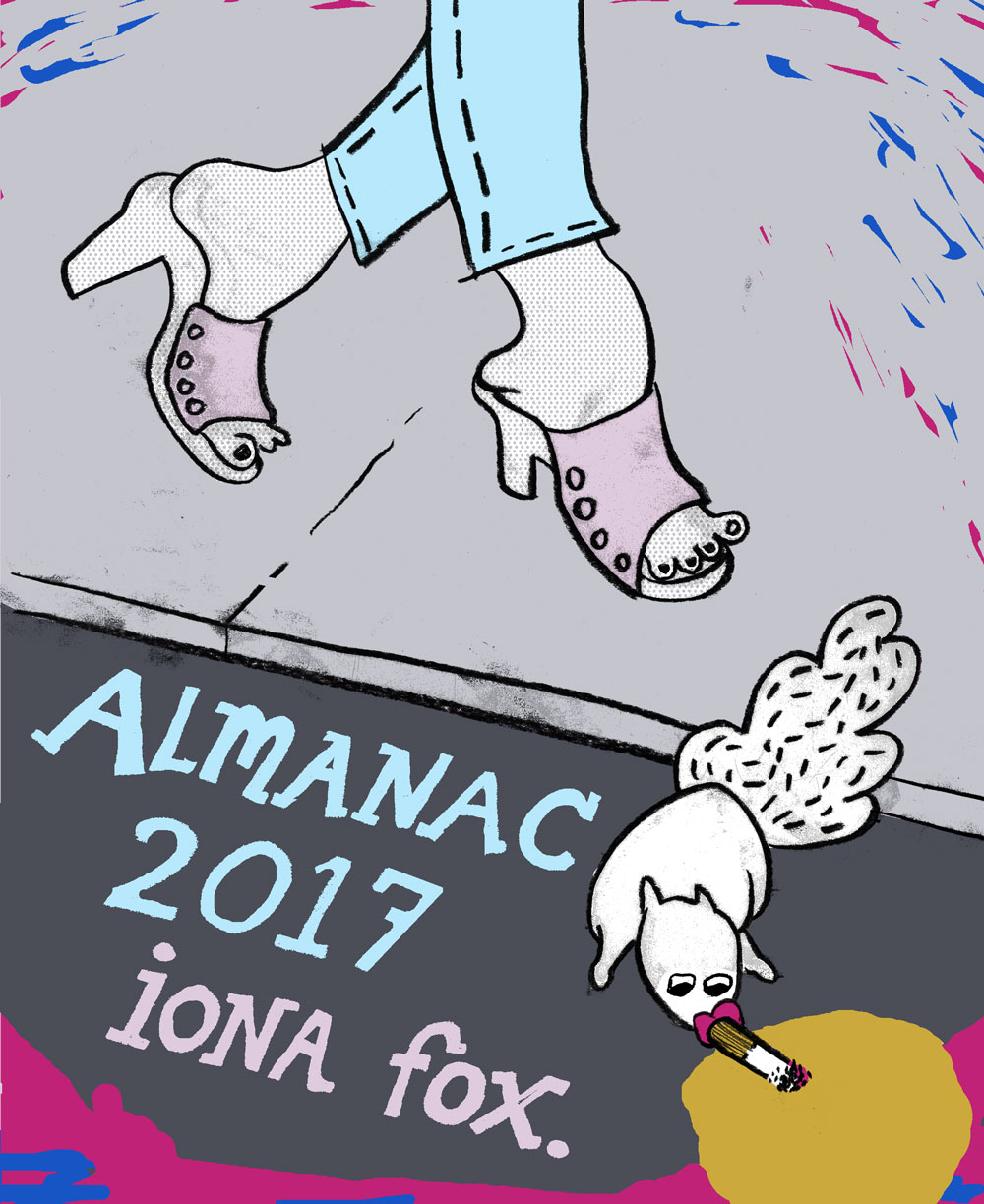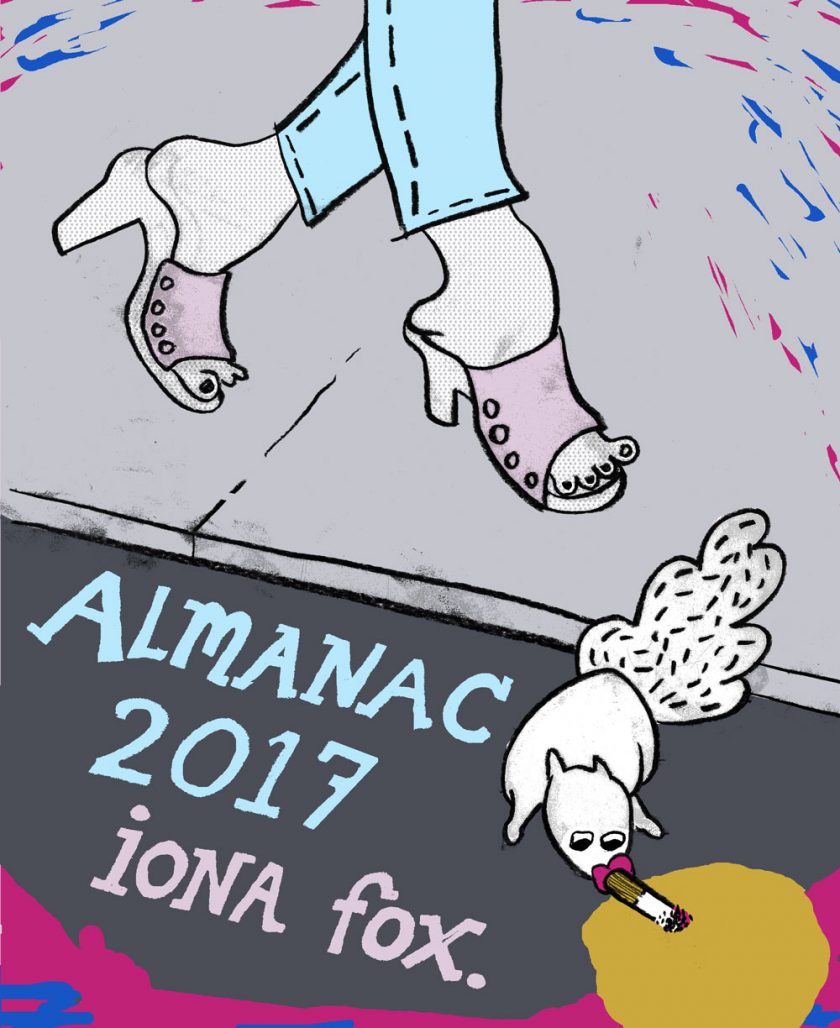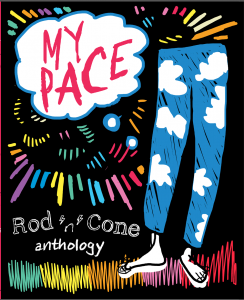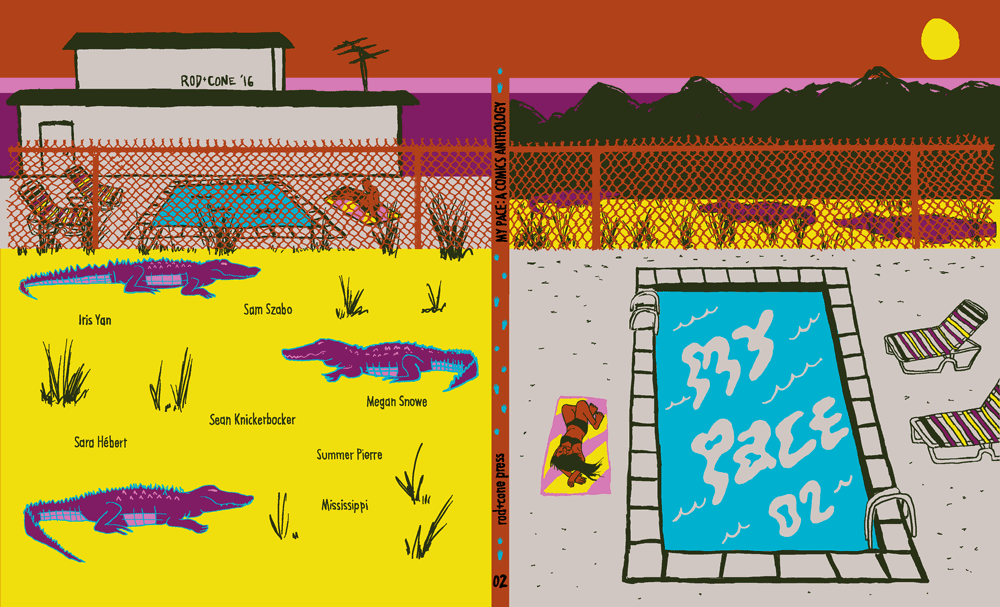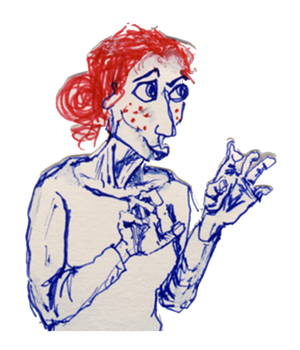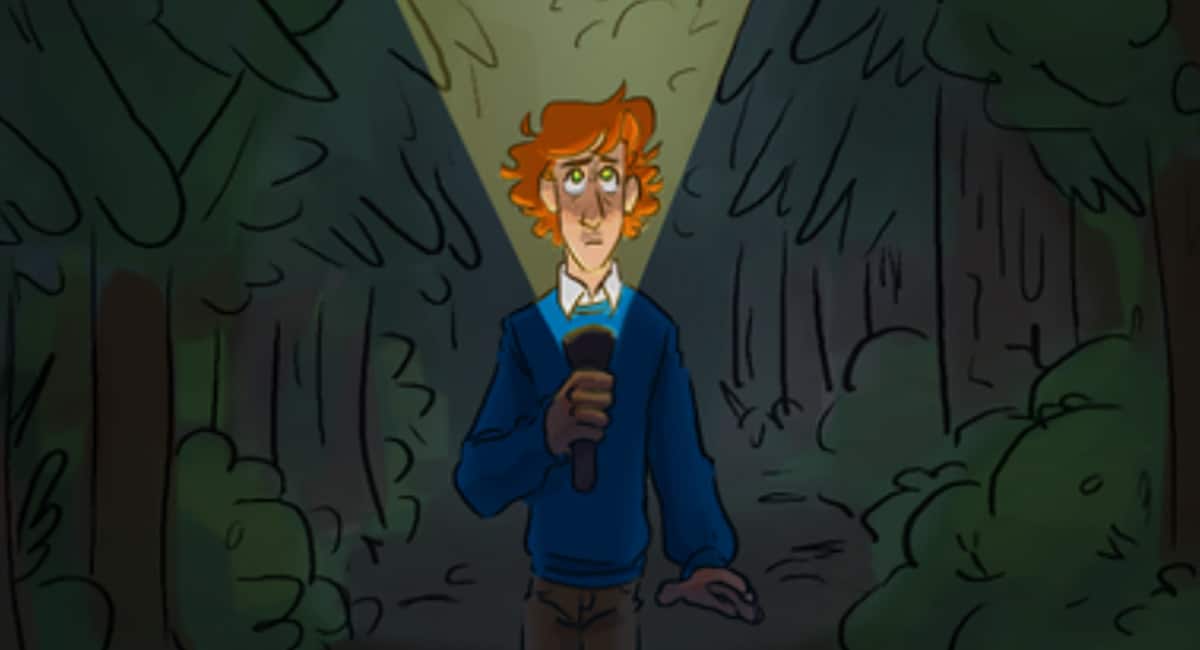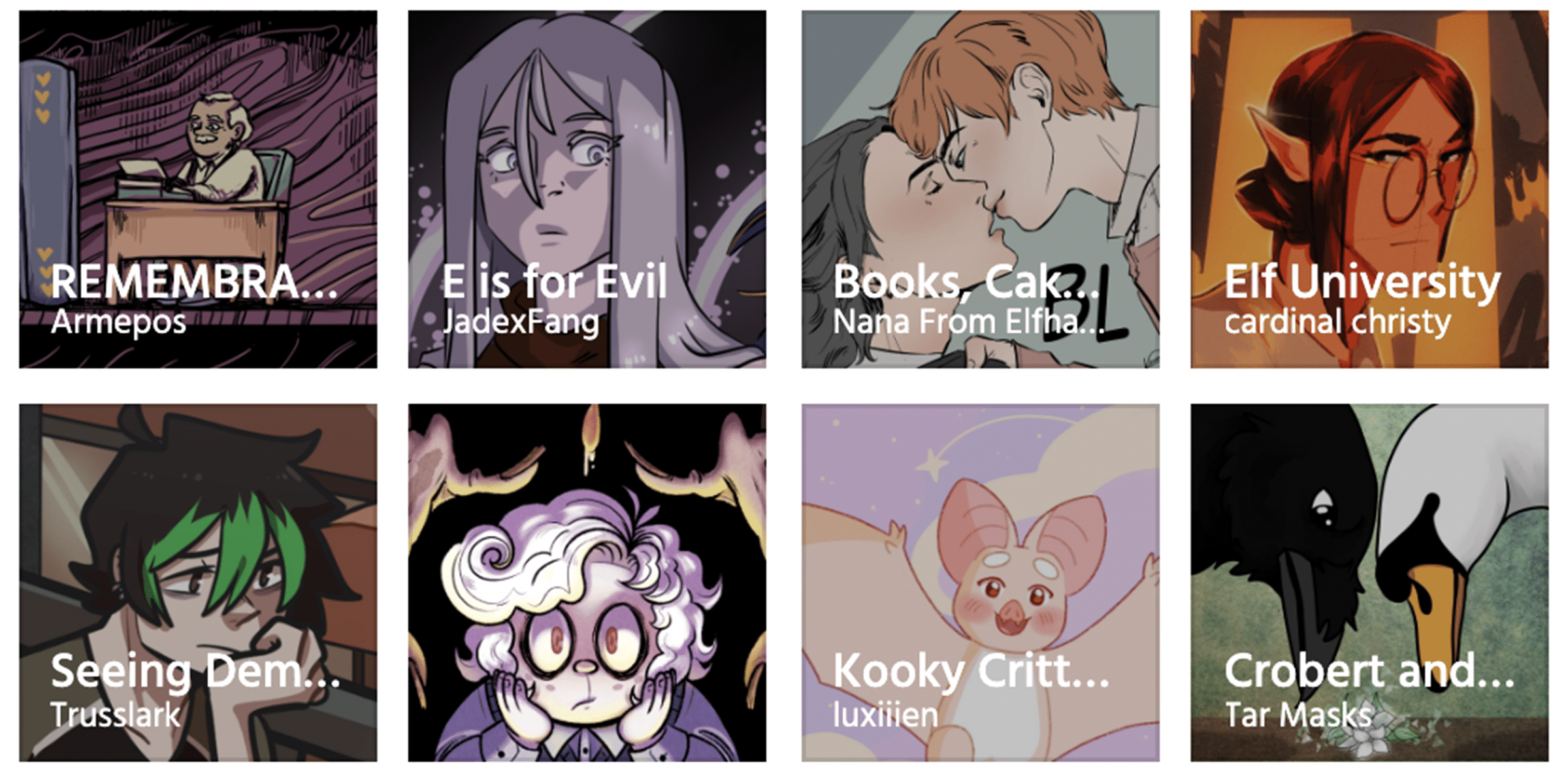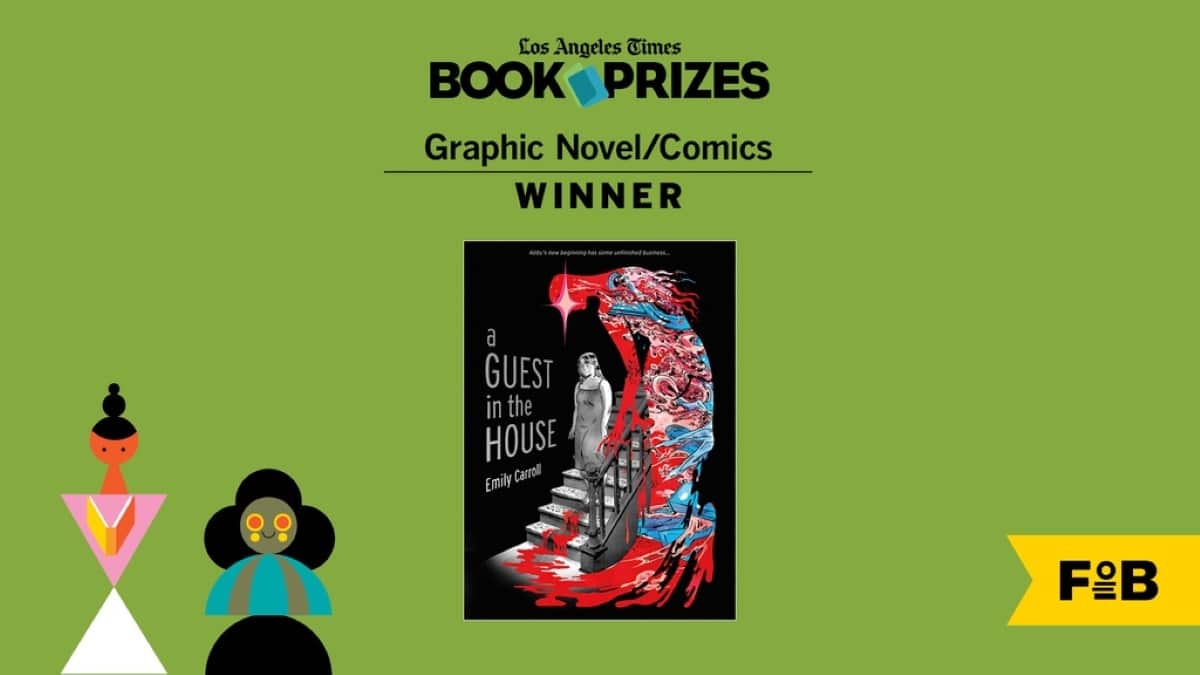The Toronto Comic Arts Festival is one of the most influential and important comic book event in North America. It’s mission is to “promote the creators of comic books in their broad and diverse voices, for the betterment of the medium of comics”. In the spirit of this mission, the Comics Beat has conducted a series of interview with some of the phenomenal cartoonists in attendance at this year’s festival. The Comics Beat will be releasing a series of interview with cartoonist in attendance. We hope that these interviews will improve our understanding of these creators voices, techniques, interests and influences.
Iona Fox is a fascinating person. A cartoonist, a farmer, a geologist, a reporter. Her weekly comic series Almanac keeps surprising me each week. Iona has this wonderful ability to find new topics and make them interesting. She effortlessly moves between autobiography, comics reportage all while using various styles. I’m always excited to see what she comes up with every week. She was kind enough to talk about her experience on her autobio comic Almanac, farming, publishin and her other projects.
—
Philippe Leblanc: For those readers who may not be familiar with you and your work, can you tell us a little bit about yourself?
Iona Fox: I’m a 32 year-old cartoonist who writes a comic for Burlington, VT’s alt weekly newspaper Seven Days. I mostly write autobio and short fiction, but I’ve worked in agriculture since high school and I have a science background so the natural world is often a primary character. “Animal behavior” comics is maybe a good description. It’s funny because nature writing has always bored me—I love gossip and girl talk, so yes, I really try to write comics about animal behavior, human and otherwise.
I worked in wildlife biology a little bit, and I went to college and studied geology, which people call the “humanities science” — there’s a lot of storytelling in geology, you always end up describing & summarizing these forces that have happened in the context of deep time. And geology merges with biology in the fossil record, so mixed in with the history of continents smashing into each other, or atmospheric change, is the dawn of life in the Cambrian seas, the age of reptiles, the Carboniferous era and petroleum reserves, mass extinctions, all of human history. And I’m digging my hands right down through soil strata every day at the farm—the place where I farm has seen agricultural use for 3,000 years and has been inhabited for millennia more, so we literally pull up artifacts of that history. Everything from stone tools to plastic tampon shells that washed up in 20th century floods. We find stuff like the burial sites from 1980s industrial farming pig plagues. Anyway, I like to put today’s bitchy workplace drama in the same comic as residual evidence of glacial history.
PL: You’ve been working on a weekly web comic called Almanac. I’ve been finding it very interesting to follow each week. It’s a sort of “catch-all” webcomics which you use for anything from fiction, autobiographical or even reportage comic. What was the initial goal in starting this weekly series? How are deciding what you’ll do on any given week?
IF: Almanac is actually a strip that’s published in the city’s alt weekly newspaper Seven Days, but the paper doesn’t post comics online so I collect them separately on the web, and eventually I edit them into a book as Almanac 2015, 2016, 2017… The only organizing factor is moving through the year, cyclically, but other than that it’s wide open. I chose the name due to the annual rhythm of each edition, seasons are the organizing factor, and if you look at Farmer’s Almanacs they are this random grab bag of collective observations, articles, crossword puzzles, sketches, etc; it’s like whoever offered something up made it in. But that’s as far as the similarities go; I have no folksy wisdom or planting advice in my comics or anything like that.
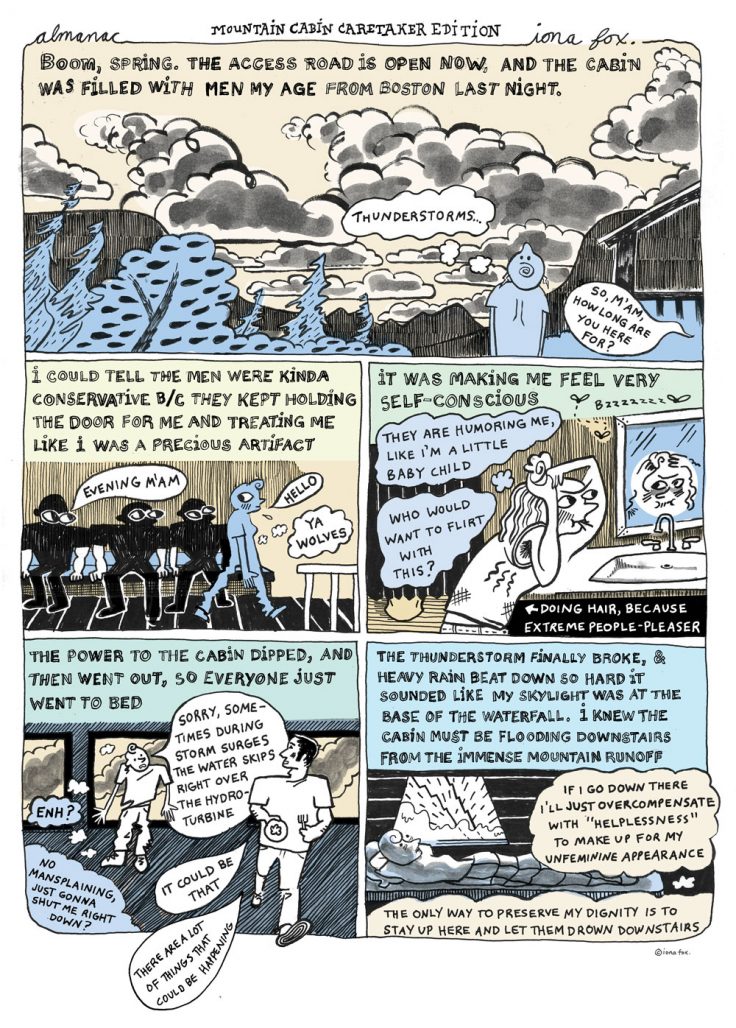
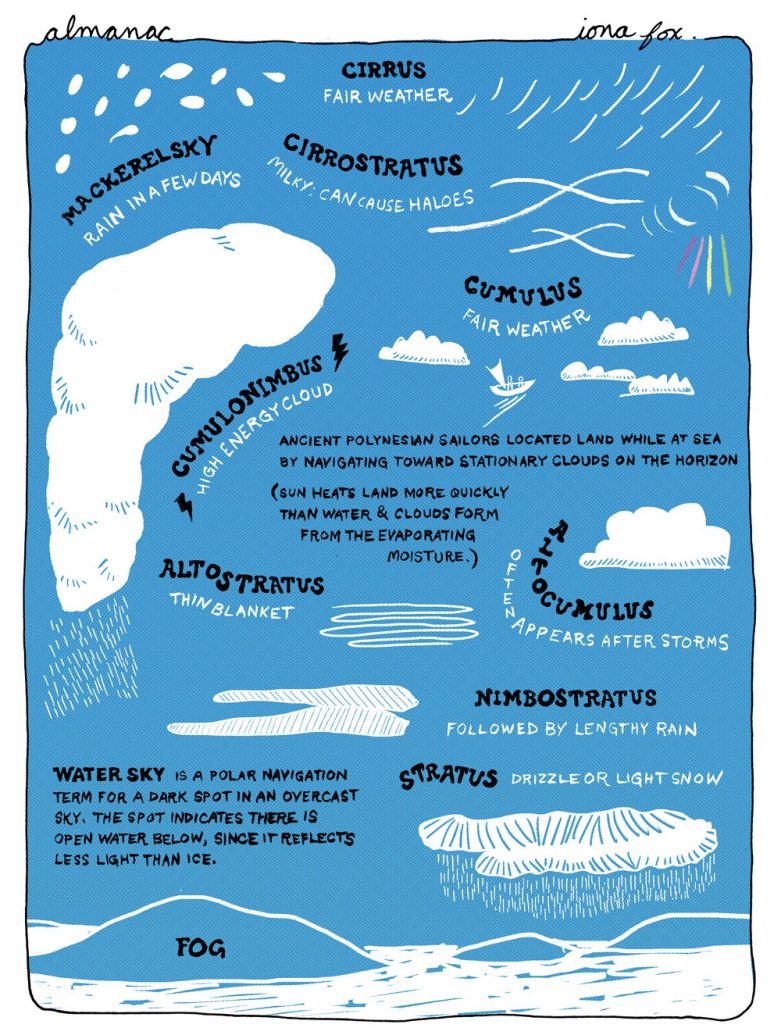
PL: You’ve done a month of comics reportage with the story on Vermont migrant farm workers, you’ve done a strip on the types of clouds, and you’ve also done strips on your hiking experience in the mountains. How do you decide what you’ll do on any given week?
IF: I work seasonally, with the farm running March-November, and then for a long time I would look after a cabin in the National Forest during the winters to fill in the wintertime income gap. So the comics are dictated very much by which job I’m working at any given point in the year, plus any current cultural zeitgeisty material.
Storywise, I have four basic blueprints that I rotate through each month— Too Much Information autobio, natural science comics, comics about community or place, and then totally imaginary stories for which I use animal characters as stand-ins. I choose animal characters to get at a mood or indicate time of year, or sometimes to elide gender, because it’s easier to withhold that from non-human characters. For example I wrote a short, 1-page comic about two geese, because geese mate for life, and it was a funny conversation that sort of speaks to monogamy, and to codependence. I’ve dated both men and women, but I’m pretty consistently a long-term, monogamous dater. I didn’t want people to read that one as a comic about say ‘Lesbians’ or ‘Men and Women;’ the dialogue was between two souls who’ve been operating as “us’ for a very long time. Another example: bear characters make sense to me in the winter, I’ll draw big bears cramped in a dark room to express the depressive claustrophobia of a Northeastern winters, or tense relationships, etc. None of this reasoning is explicit in the comics…it’s pretty obvious that they’re human dramas and personalities in animal form.
I’m a vegetable farmer, which is a totally separate world from dairy. I was told kindly, but flat-out when I was in high school that there are no women in dairy, and that vegetable farming was gonna be the place for me. And, undocumented, migrant farm workers are the backbone of Vermont’s diary industry. So the collaboration with former dairy worker and current labor organizer “Ernesto” (not his real name) came not out of the farm community but out of a community health center’s grant project that paired cartoonists with migrant dairy workers to make this mental health comic series about how undocumented people are navigating the underground economy. I also volunteer with a migrant workers’ rights organization called Migrant Justice, and Ernesto is one of the primary organizers. We both had already participated in the health clinic’s comics project, and Migrant Justice decided it would be beneficial to run Ernesto’s particular story in the paper during Trump’s inauguration. So I redrew his stories in my newspaper spot during the first month of Trump’s presidency.
The coda to this is that in March he and some other Migrant Justice organizers were targeted and rounded up by ICE. It was horrible. He’s a well-known and outspoken activist, and it was clear that this was politically motivated on the part of individual ICE officers. Ernesto and some other organizers were held in detention for a long time, and after a big media outcry, he and some others were released, but not everyone was released!
PL: What do you hope to accomplish with Almanac. You’re obviously experimenting with storytelling techniques, types of fiction and colour, but what do you most wish to be able to get out of this weekly strip?
IF: I was talking to Glynnis Fawkes, another VT cartoonist, about writing both autobio and about incorporating something very specialized that you’re very nerdy about. Glynnis has a background in western classical world archaeology and we were talking about our need to not only write about our lives, but also incorporate another subject of expertise and passion. It can be hard to find a balance, I worry about going too far and boring people with my nerdiness regarding the weasel family, or conversely talking only about myself. Or, lightly brushing over both and digging into neither. I’d like to find that balance more confidently. I think Sophie Yanow does this in a really transcendent way, her subjective reporting make her essays seem all the more revealing and true. Whit Taylor is a genius at this too, I also really admire her comics.
The variation in style and color in Almanac has partly to do with general experimentation, and partly because my natural style doesn’t print well in the newspaper. I can’t draw for example, colored text, because with offset newspaper printing that color is going though three separate rollers, and no way are they going line up perfectly. Colored text just looks illegible and muddy in my small corner of the paper. Black line art with simple color is what prints crisply, so I’m trying to adjust my style to deal with that. It’s old-school.
PL: You’re also the co-publisher at Rod & Cone. Can you tell us more about that?
IF: Cartoonist Anna McGlynn and I run a small (mostly) comics press, promoting work that has great writing or some spark or living quality. I know that is so vague.
We started a series called My Pace that has featured cartoonists like Cooper Whittlesey, Summer Pierre, Iris Yan, Sam Szabo, feminist collage artist Sara Hèbert, Sophie Yanow, Mississippi, and others. My Pace is named for the Japanese English “maipesu,” which is used to describe anyone who “marches to the beat of their own drum,” or “has their own way of doing things.” It’s not infrequently associated with having one’s head in the clouds. The context for that is that Anna had been living in Japan for nearly a decade and had recently moved to the USA when we started Rod & Cone. She has been labeled ‘maipesu’ and I think she owns it well. :)
It’s pretty loose. I’ve never had a boner for super formalist comics. I know there’s intelligence and creativity in that kind of work, etc, but…it still gives me a creepy uptight feeling like some death mask or wax museum thing. The closest we came to that sort of thing was with this experimental fiction collection we did called Girl Talk where we asked four cartoonists to draw fiction based on each others’ diaries (they had to exchange and read each others’ secret diaries!) That was based on our personal (within the group) experiences of the phenomenon called girltalk; it was an experiment in formalizing one of the ways in which we speak and think. I think some people found it interesting, but one of the artists, Hannah Kaplan, she mentioned that the restraints were maybe both too arbitrary and too vague to enrich her storytelling. I think sometimes those things can work, but maybe the formal framework came mostly from my desire to seem Very Serious
PL: Your biography also mentions you’re a farmer. How does that experience helps or hinder your artistic pursuits? You’ll be at TCAF in mid-May, isn’t that typically a prime time for planting late root crops like beets and potatoes?
IF: It is indeed a hectic time. When I turned 30, I started having scary health problems directly related to the years of farming. It was very hard— I felt like I had finally made it, I was running a profitable farm with my partner which is pretty much the peak destination you can work towards in a farming career. But I had to scale back, and now I only work half-time at a cooperative, worker-owned farm, so I’m not the responsible party. I also work part-time at an herbalist company with time-off policies. Probably I shouldn’t be farming at all anymore, but it’s the thing I’m best at and so far it’s been hard to quit. It’s my community and my identity, what else am I good at? The upside is that I have more time than I’ve ever had in my life. I finally have the time to write comics about farming, wink
The other thing is, farming turns everyone into a crazy workaholic. Farming is not an easy fit with capitalism. You slowly become obsessed with “how can i do this most efficiently” and “is this the best use of my time?” because it’s the best way to edge your farming business into profitability. If you can do something twice as fast, it’ll cost you half as much in labor! It’s an idyllic but also slightly psychotic, Tayloristic factory. But in some twisted way, that ingrained workaholic impulse has served me in terms of pulling off the transition into a new job and maintaining a creative life after hours. And pulling off a weekend warrior trip to hawk my wares in Toronto. See you guys soon!
PL: In addition to Almanac, what else have you been working on?
IF: I am just getting involved in a book that’s a collaboration between cartoonists and female veterans in Vermont. Rod & Cone is working on a new My Pace with a political theme, and we are also working out the funds to commission cartoonists to create some new Tijuana Bibles.
—
You can follow Iona’s Almanac every week on her Tumblr page. You can also find her on Instagram and Twitter. You can find the latest comics from Rod and Cone over at their store.
You can come meet Iona at TCAF. She’s looking forward to chatting about your favourite vagetables!


